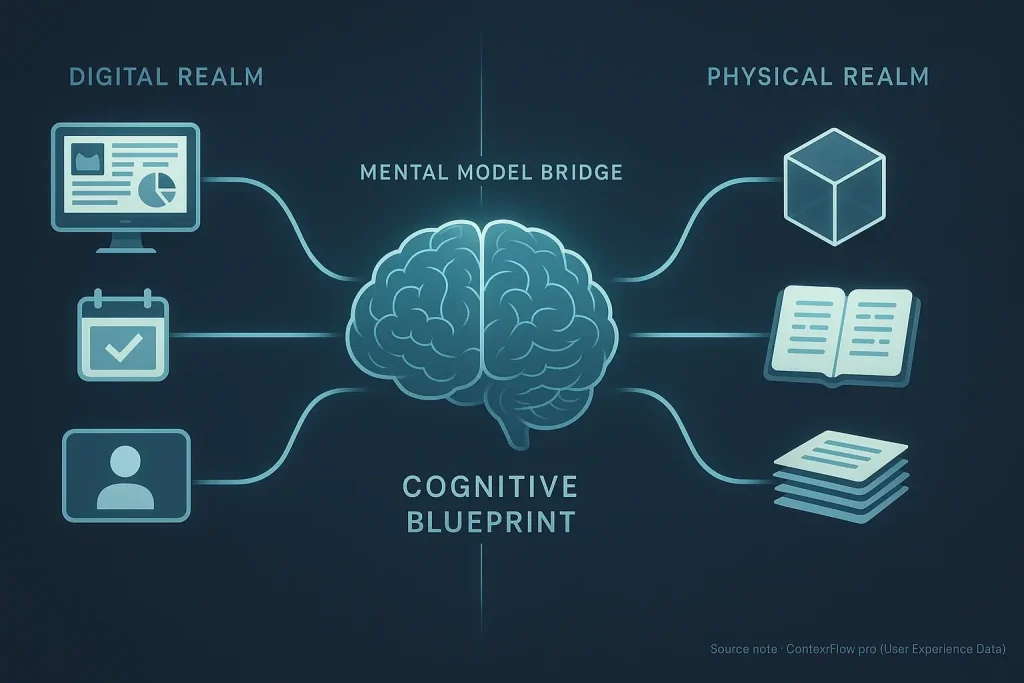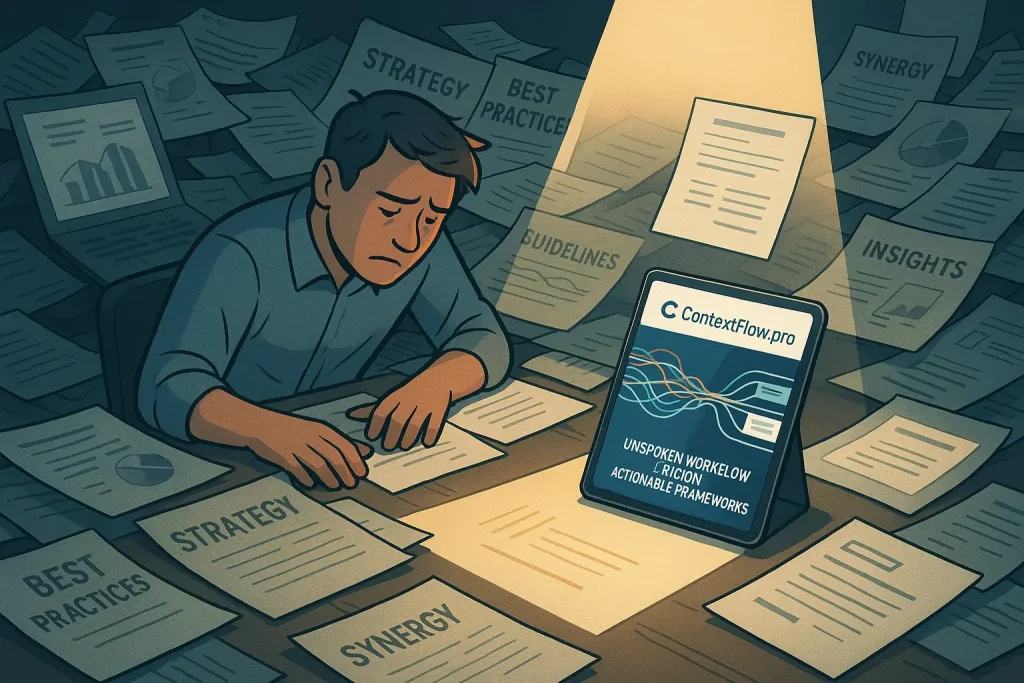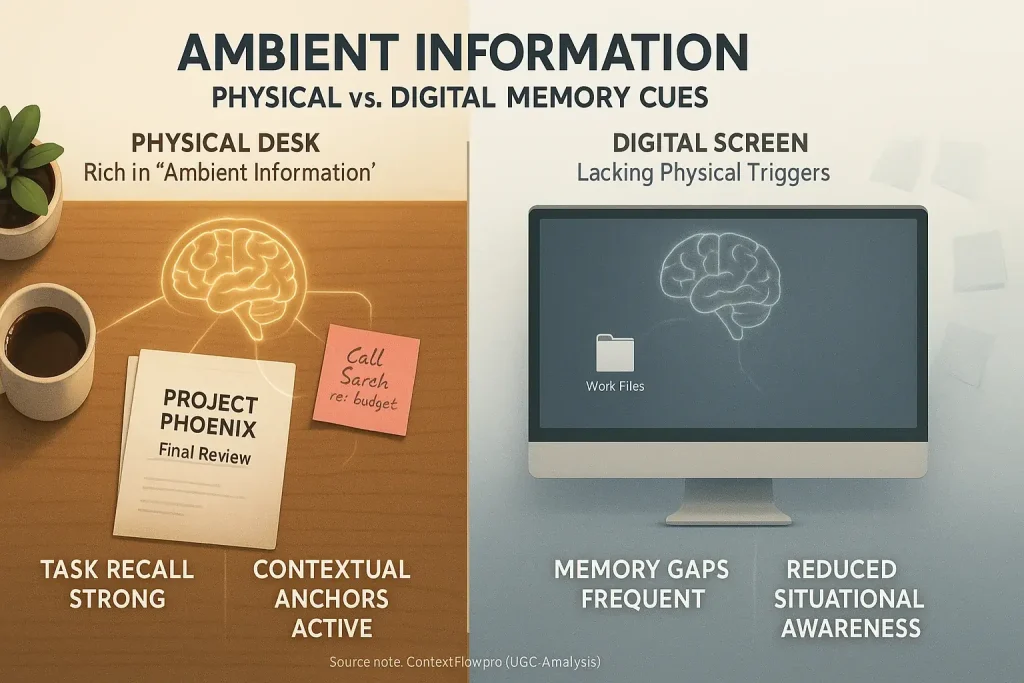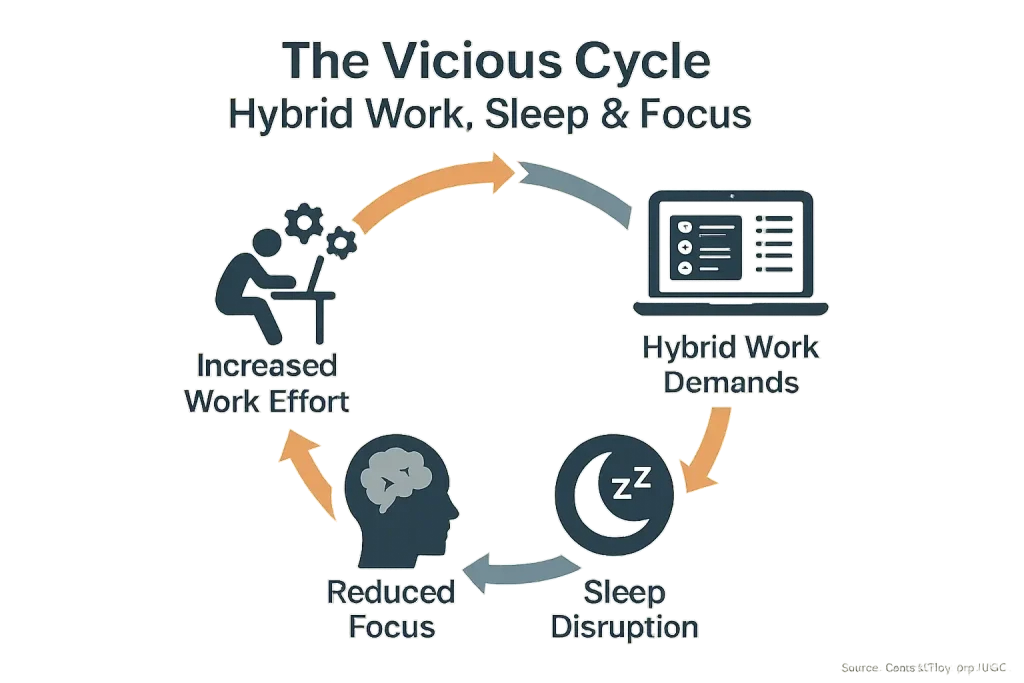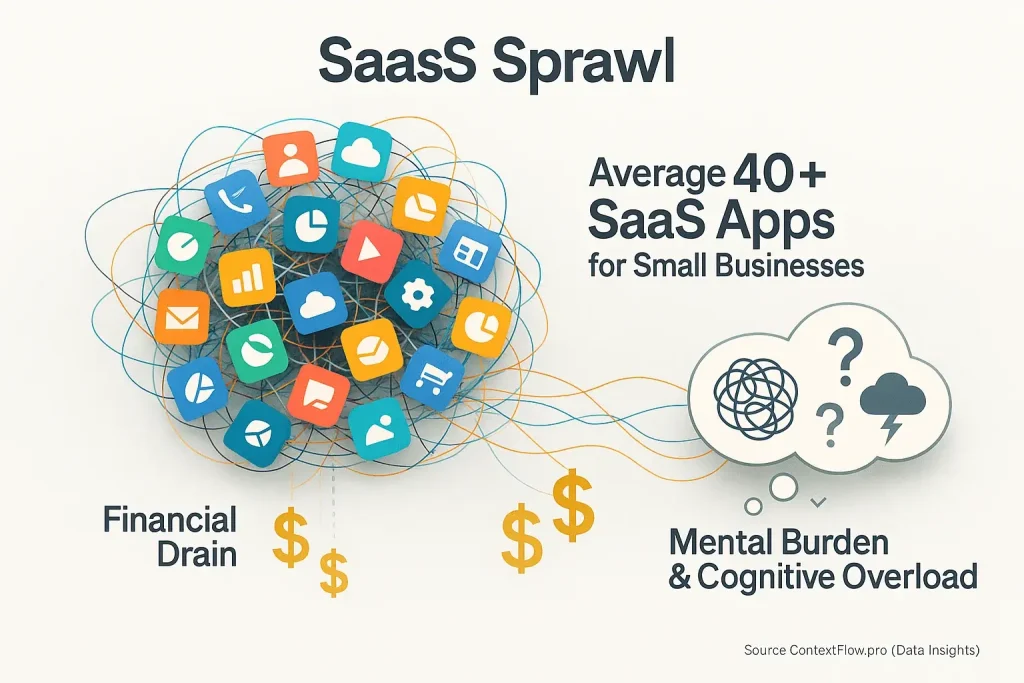The 'Flexibility = Chaos' Myth: Why It's Time to Rethink Hybrid Work Autonomy
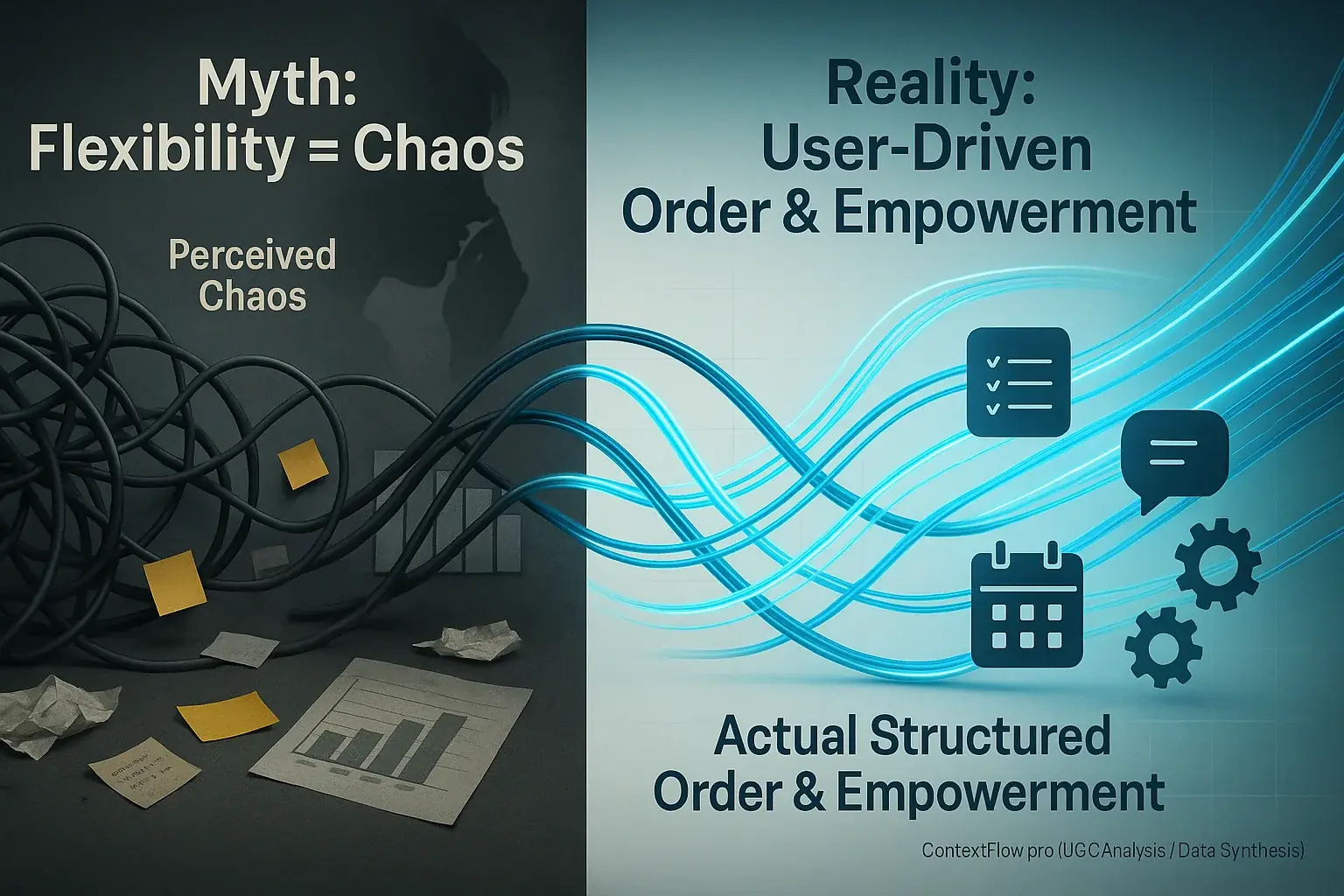
Does hybrid work flexibility secretly panic leadership? Many managers harbor this fear. They equate workplace autonomy with inevitable disorganization. User experiences, however, consistently challenge this assumption. Professionals often thrive when granted control over their work environment and schedule.
The unspoken anxiety? Flexibility feels like lost managerial grip. Our extensive analysis of user-generated content reveals a different reality. True workplace autonomy frequently cultivates robust, self-imposed structures. Consider teams initially apprehensive about hybrid schedules. Many users report designing their own communication protocols and task management systems, subsequently boosting their collective output. This is empowerment. Not chaos.
ContextFlow.pro delves into how users achieve this balance. We uncover the practical strategies individuals and teams employ. They build personal frameworks for productive hybrid work. This page illuminates these user-driven solutions. These are not about rigid corporate rules, but about effective, personalized organization that truly supports hybrid productivity.
Beyond the Leash: How Autonomy Actually Fuels Hybrid Worker Productivity & Trust
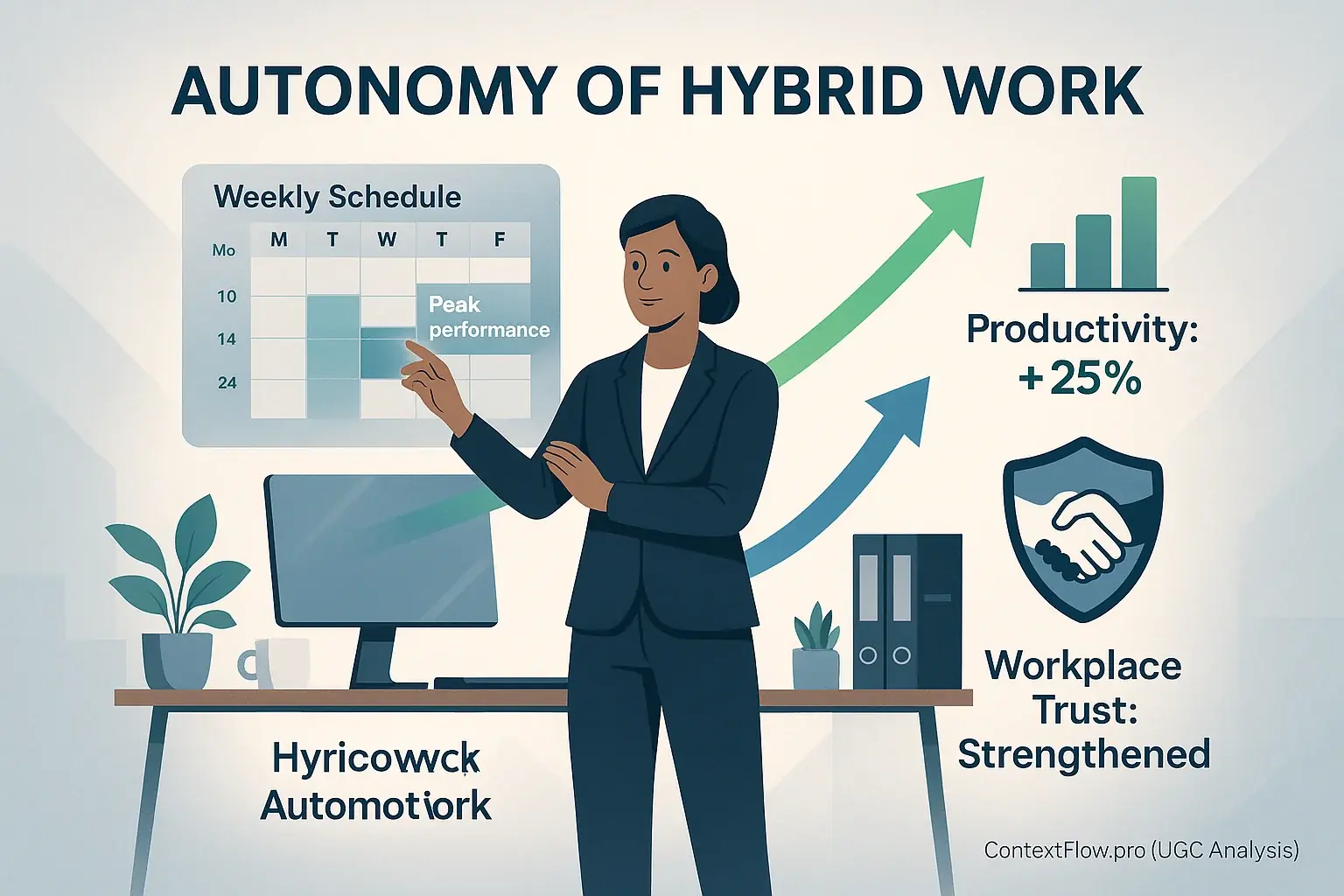
Hybrid Work Autonomy fundamentally empowers your people. Employees gain control over their schedules. They also shape their immediate work environments. This shift directly fuels increased motivation, a theme echoing through countless user experiences. A powerful sense of ownership emerges when individuals can direct their own workflow. Imagine a hybrid worker, previously constrained by rigid structures, now deciding how and when they tackle their most crucial tasks; they don't just complete work, they champion it.
This empowered approach translates into tangible Employee Productivity gains. It’s a common story. Users report a significant boost in focus. They achieve this by aligning tasks with their personal energy rhythms and preferred settings. One professional described finally cracking a complex problem. How? By working during their undisturbed late-evening peak hours, a flexibility hybrid autonomy provided. The project finished sooner. The solution was more innovative. This is autonomy delivering results.
Granting Hybrid Work Autonomy acts as a clear signal of Trust in the Workplace. Managers demonstrate faith in their team's capabilities. Employees perceive this trust. It cultivates strong accountability. Loyalty naturally follows. The collective voice of users suggests that feeling trusted is a far more potent motivator than constant oversight. Many express a simple truth: when trusted to manage their responsibilities, they willingly give their best effort, fostering a more committed team.
Furthermore, Hybrid Work Autonomy significantly enhances Work-Life Integration. This is a critical benefit users frequently highlight. Employees can more easily manage personal commitments alongside professional duties. This flexibility is key. It actively reduces the risk of burnout. People report feeling less pressure. They feel more command over their entire lives. The result? A healthier, more engaged, and ultimately more productive workforce thrives.
The 'Secret Sauce': User-Built Routines & Systems That Tame Hybrid Flexibility
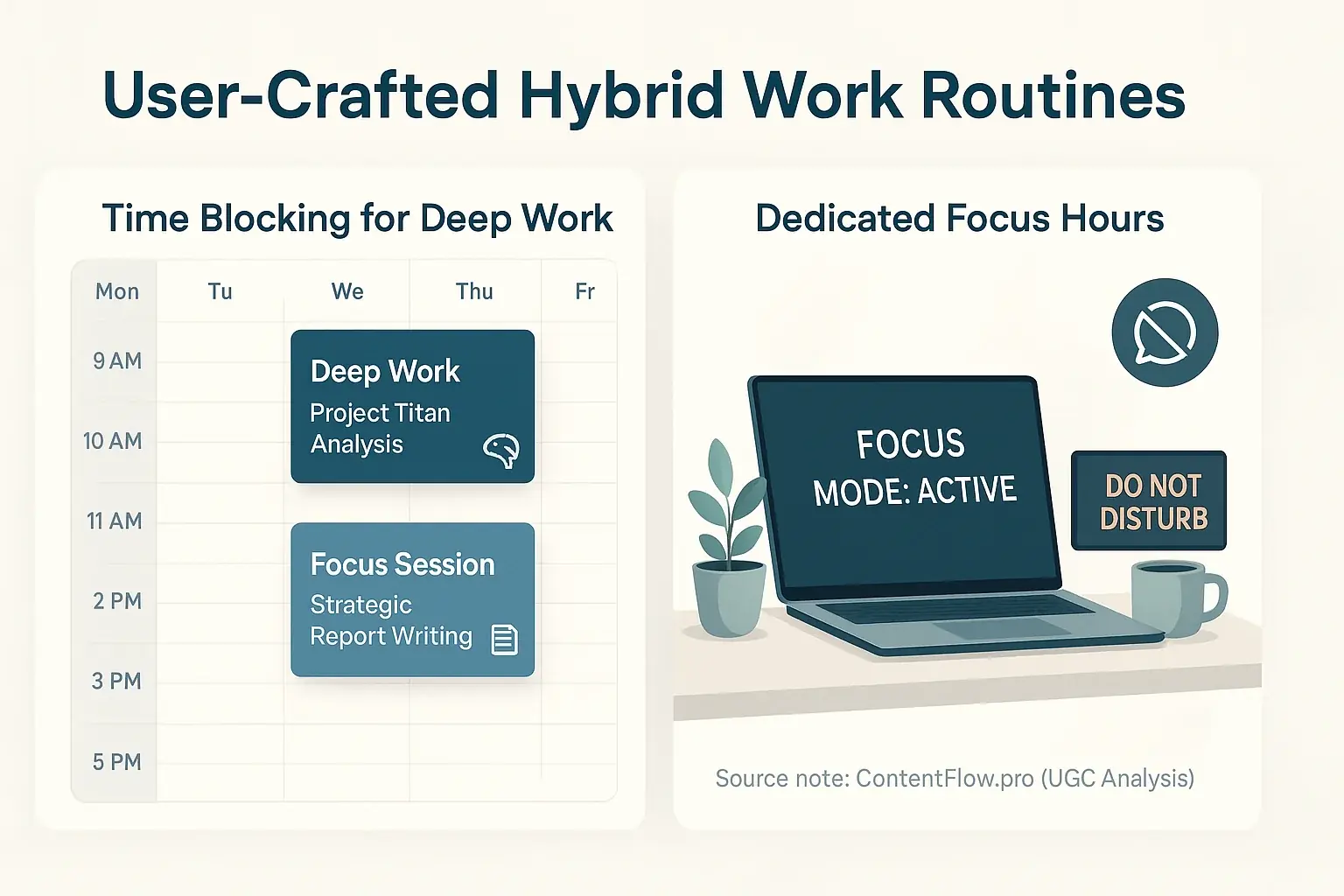
Hybrid flexibility offers apparent freedom. This freedom, however, often hides potential chaos. Our research into UGC uncovers a vital truth. Successful hybrid professionals actively architect their own routines. They build systems. Imagine a knowledge worker, initially adrift in an open-ended schedule. Distractions mounted. Deadlines loomed. Then, they implemented personal time-blocking and clear task boundaries. The result? Control. Productivity. This proactive structuring is the real secret.
What shape do these user-forged systems take? Our analysis of countless hybrid work experiences points to several common, effective patterns:
- Time Blocking for Deep Work: Many users meticulously schedule uninterrupted blocks for complex tasks. They communicate these focus periods clearly to minimize disruptions.
- Dedicated Focus Hours: Professionals often establish 'meeting-free' zones within their day or week. This guards essential time for concentration and creative output.
- Custom Communication Norms: Teams frequently develop their own informal rules for using chat, email, and calls. These user-driven protocols streamline information flow effectively.
- Optimized Workspace Design: Individuals strategically arrange their physical environments, both at home and in the office. The aim is a personalized space that supports their specific workflow.
- Proactive Disconnection Rituals: Some users build in non-negotiable breaks or end-of-day shutdown routines. This practice combats always-on culture and protects personal time.
These productivity frameworks are rarely corporate directives. They are born from individual initiative. Users understand their unique work styles. They know their peak energy levels. They identify their biggest time-wasters. This profound self-awareness fuels the creation of deeply personalized systems. These systems achieve remarkable effectiveness. The key? It is this personal tailoring.
So, are these rigid, unbreakable rules? Not at all. User experiences show these 'secret sauces' are adaptable guides. They evolve with changing project demands. They flex with personal circumstances. The core purpose remains: empowering individuals to master their own context flow. This ensures sustained performance and well-being.
Flexibility Needs Fences: Why Clear Expectations (Guardrails) Are Non-Negotiable

Hybrid work offers valuable autonomy. This freedom, however, demands structure. Without clear boundaries, flexibility quickly devolves. Teams report significant confusion. Deadlines slip. Stress escalates for everyone. Imagine a project team: members work at entirely different, uncommunicated hours. Urgent questions go unanswered for days. Progress grinds to a halt. This scenario is a common pain point in user narratives, highlighting the need for hybrid work guardrails.
Effective hybrid work relies on defined guardrails. These are not about micromanagement. They are shared agreements. Such guardrails, frequently highlighted in user discussions as critical, typically include:
- Core collaboration hours for essential team synergy.
- Response time expectations for different communication channels.
- Clear project deadlines ensuring consistent task completion.
- Accountability metrics for transparently tracking progress.
These elements provide essential clarity. They help teams navigate flexible schedules successfully, preventing the chaos often feared.
Clear expectations directly build team trust. Accountability strengthens. When everyone understands the operational framework, collaboration improves. Individuals can then confidently manage their flexible arrangements. Many users express relief with established guardrails. They report feeling more free, not less. This structure reduces anxiety about availability and unstated assumptions. Knowing the rules empowers true autonomy within hybrid models.
The objective is not stifling flexibility. Productive channeling of autonomy is the goal. Guardrails align individual work patterns with broader team objectives. They ensure organizational goals are met. This balance prevents the "anything goes" atmosphere that user experiences show undermines hybrid success. It makes sustainable, effective flexibility a reality for both employees and the organization.
Build Your Ideal Hybrid Flexibility Framework: Our Interactive Planner
Design Your Ideal Hybrid Flow
Answer a few questions to build a personalized framework for your hybrid work flexibility.
Your personalized framework makes a difference. Real flexibility is not chaos; it demands clear boundaries you define. You establish your own terms for focused work and well-being. This method enhances user productivity. It also protects your work-life balance. Countless users report higher satisfaction when they actively shape their flexibility. They also face less burnout. You are taking control.
Think of this framework as a living document. It must evolve with you. Review your plan regularly. Adapt your strategies as your personal needs change. Team dynamics might also shift. This continuous adjustment is a key insight from seasoned hybrid professionals. Such adaptation ensures long-term hybrid work optimization and sustained success.
Taking control of your flexibility is a powerful move. You actively design your work rhythm. This approach helps master your context flow. It directly cuts down hybrid work friction. You are building a more sustainable, productive work experience.
The Real Takeaway: Flexibility Isn't Chaos, It's Empowered Structure
Hybrid Work Flexibility often gets mislabeled. Chaos is not its defining trait. User experience analysis overwhelmingly shows intentional flexibility unlocks substantial workplace advantages. Professionals themselves pioneer these effective, personalized flexible models daily, proving it a strategic asset.
Two elements anchor successful hybrid flexibility. User-driven structures create personal workflow coherence. Clear, mutually agreed guardrails define operational boundaries. These foundations together directly enhance productivity, bolster team trust, and significantly improve overall well-being.
Embrace this structured approach to flexibility. Actively shape your hybrid work environment to master your context flow. This deliberate design empowers users. It ensures sustained productivity and genuine work-life integration.

